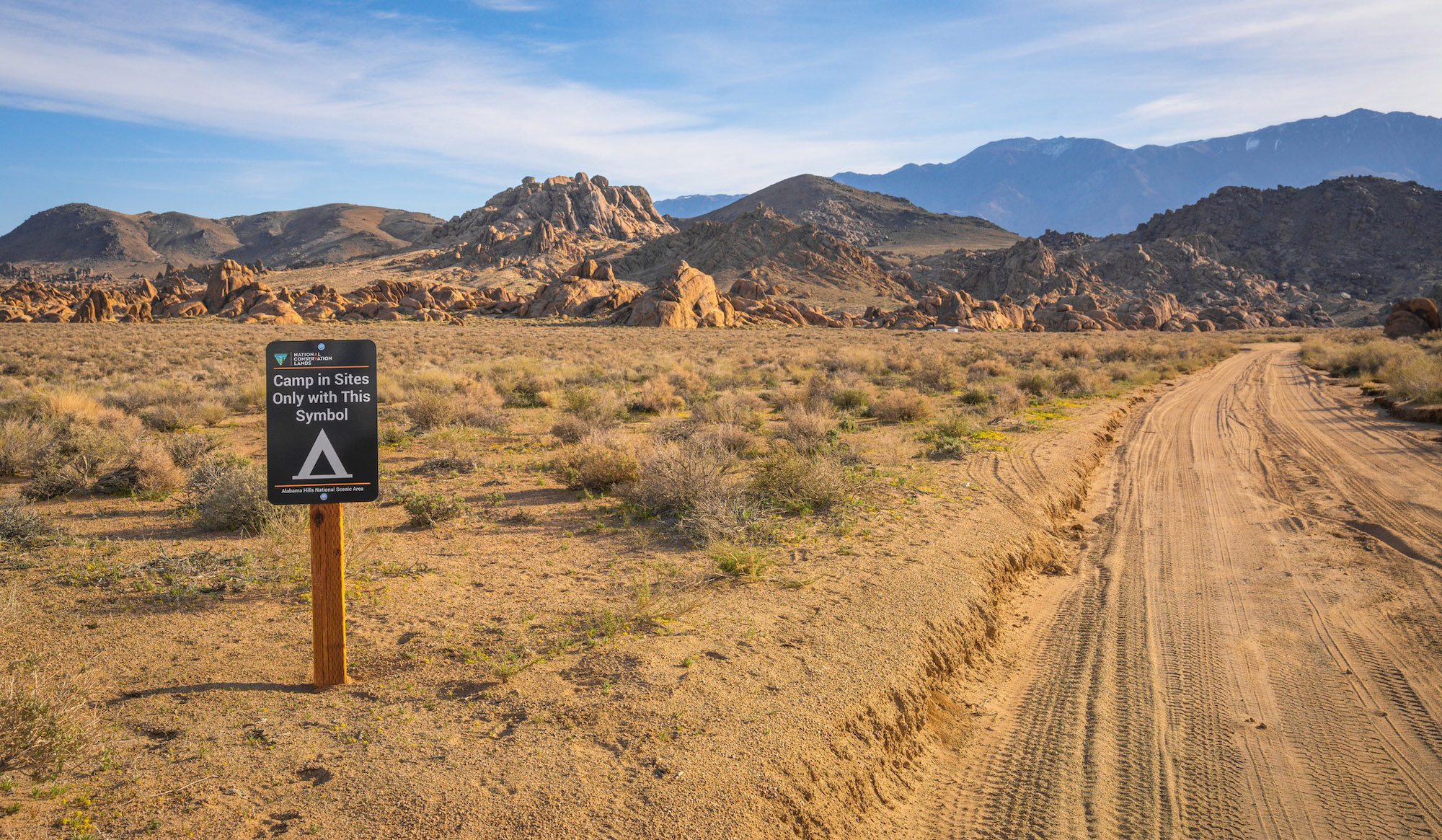What can hunters, anglers, and shooters expect of the new Trump administration? So far it’s incentive-based conservation, oil-field mitigation, better access through technology, and skeletonized agencies
If there was any doubt about incoming President Donald Trump’s emphasis on domestic energy production, it was laid to rest with his familiar mantra of “Drill, baby, drill!” in Monday’s inaugural address.
Doubling-down on domestic energy production has been one of Trump’s most consistent messages as a candidate and now as America’s 47th president. He’s also been vocal about his administration’s intention to slash the number and authority of civil servants, and to walk away from policy commitments of his predecessor, including the Paris Climate Agreement and some provisions of the domestic Farm Bill.
Trump’s emphasis on a handful of disruptive policies has left conservation leaders wondering how to engage the administration. They’re also trying to identify which policy priorities they think have the best chance of being enacted and can do the most good for America’s wildlife, lands, and waters and for those of us who hunt, fish, and recreate on them.
It’s a tricky balance for apolitical conservation groups to stay on the receiving end of a transactional administration while also advocating for policies that require bipartisan collaboration and a certain public-sector investment. Many groups are huddling to determine which policy priorities to scale back, which to modify given the administration’s stated positions, and which to scrap in the current political climate.
For instance, requests to fully fund federal land-management agencies is likely to be a non-starter in an administration that has highlighted efforts to cut bureaucracies and budgets. Similarly, conservation groups’ calls to reduce energy development on fragile public lands is unlikely to be observed in an administration intent on maximizing domestic energy production under presumptive incoming Interior Secretary Doug Bergum, a champion of fossil-fuel extraction who also chairs the new National Energy Council.
Safari Club International’s political wing was vocal in its support for the Trump candidacy, and notes that many of the incoming administration’s policies align with the club’s priorities. In many swing states, where the presidential election results hinged on a few thousand votes, hunters and gun owners voted for Trump in decisive numbers.
“Hunting was on the ballot in this election, and hunters showed up,” stated SCI in a news release, noting that the club “educated and mobilized a record number of hunters who voted for President Trump because he understands that hunters have made and will continue to make our country great.”
In detailing its policy priorities under the second Trump administration, SCI stresses that it is not looking for “big government programs and handouts” but rather a regulatory climate that enables private-sector conservation efforts and promotes traditional values.
Specifically, SCI will support administration policies that “ensure that states are the primary managers of their own wildlife with limited interference from the federal government.”
But other SCI priorities seem to require federal-agency intervention, including “increasing public land access for hunting, fishing, and recreational shooting, modernizing and responsibly administering the Endangered Species Act, protecting access to traditional ammunition and fishing tackle for sportsmen and women; and bolstering the importance of the Pittman-Robertson Act and the North American Model of Wildlife Conservation.”
American Wildlife Conservation Partners, a coalition of over 50 conservation groups that collaborate on federal policy, publishes a briefing paper called Wildlife for the 21st Century in presidential election years. AWCP notes that over the next four years, the pressures on America’s fish and wildlife resources will continue to intensify while the federal government (both Congress and the executive branch) neglects a number of important topics. But given the reluctance of the incoming administration to invest in large-scale public-works projects that might provide conservation benefits, AWCP members are projecting a more practical approach to conservation, one built around the personalities and priorities of the Trump administration.
Specifically, the AWCP recommends permanent agency funding for big-game migration corridors in the West. It’s one of the priorities of Wildlife for the 21st Century, also called W-21. It was also a landmark initiative adopted by Trump’s first Secretary of the Interior, Ryan Zinke, who signed Secretarial Order 3362, establishing inter-agency coordination to identify and conserve migration routes.
“SO 3362 took a thoughtful and measured approach to conservation by respecting state wildlife agencies, private landowners, and other important stakeholders, such as industry,” says Taylor Schmitz, director of federal relations for the Congressional Sportsmen’s Foundation and current chair of AWCP. Specifically, AWCP asks both Congress and the administration to permanently fund work related to conserving migration corridors.
“Signed and implemented in the first Trump administration and carried over to the Biden-Harris Administration, there is strong bipartisan interest by Congress to codify this effort through legislation, which is specifically asked for in W-21,” says Schmitz. “This is a great example of how we can work with the incoming administration to deliver meaningful conservation that respects and upholds state management authority and promotes bipartisan cooperation.”
Recognizing the administration’s full-throated energy-at-all-costs imperative, conservation groups are downplaying their recommendations for moderating domestic energy production on public lands. Instead of calling for permitting reforms or moratoriums on drilling, W-21 calls for ensuring that wildlife and habitat goals are integrated into energy planning. The group also calls for mitigating impacts of energy development on wildlife and habitat.

“The rapid expansion of renewables, coupled with continued non-renewable and mineral development, is concerning for wildlife conservation,” the document notes. Development fragments habitat, disrupts wildlife movement and distribution, and impairs water quality and quantity.
W-21 recommends the creation of mitigation accounts to offset the impacts of energy development by investing in habitat elsewhere. A portion of revenue from energy development on federal lands could be directed to state and federal agencies to mitigate losses of fish, wildlife, and their habitat, the document states, noting that such a revenue redirection would require Congressional action.
The CSF’s Taylor notes that access will be a focus for conservation groups over the next four years.
“Access means more than simply open lands and waters for hunting, fishing, trapping, and shooting, which is critical, but access also includes modernizing the ways in which we access these lands and waters,” he says. Much of that work can be shared by the executive branch and Congress.
Indeed, the Modernizing Access to Our Public Waters (or MAPWaters) Act passed the House unanimously on Tuesday and now heads to the Senate Energy and Natural Resources Committee for consideration. The bill requires federal agencies to compile and publish digital maps of waterways and access points. The MAPLand Act, also sponsored by Utah Congressman Blake Moore, has the same requirements of federal agencies to make maps of lands available to the public.
“The MAPLand and MAPWaters acts are great examples of how we should be looking at modernizing outdoor recreation in the 21st century,” says CSF’s Schmitz. “We also need to ensure that lands and waters cannot be arbitrarily closed for unjustified reasons.”
The first Trump administration was generally bullish on access, opening national wildlife refuges to a wide range of hunting opportunities. Similarly, under direction from Congress, the Biden Administration pushed for increased access to recreational shooting facilities on public land.
Conservation groups expect to see personnel cuts to land-management agencies in the second Trump administration, but Schmitz says that a new era of efficiency could be achieved by streamlining regulations
“We see active management of our public lands as a necessity to transform underperforming landscapes severely degraded by lack of active management or impacted by encroaching or invasive species,” he says. “Our land management must become effective and efficient and not bogged down in unnecessary red tape and endless litigation that effectively halts conservation projects to restore forest and landscape health. Land management activities require funding and skilled people and we feel leveraging public-private partnerships to deliver conservation can make limited federal funding go further.”
This week the House passed the Fix Our Forests Act, sponsored by Bruce Westerman (R-Ark), chairman of the House Natural Resources Committee. The bill establishes requirements for managing National Forests, including reducing wildfire threat, establishing an interagency Fireshed Center responsible for assessing and predicting fire risk, expedites review of some projects, and promotes forest restoration and stewardship efforts.
What can hunters, anglers, and shooters expect of the new Trump administration? So far it’s incentive-based conservation, oil-field mitigation, better access through technology, and skeletonized agencies
If there was any doubt about incoming President Donald Trump’s emphasis on domestic energy production, it was laid to rest with his familiar mantra of “Drill, baby, drill!” in Monday’s inaugural address.
Doubling-down on domestic energy production has been one of Trump’s most consistent messages as a candidate and now as America’s 47th president. He’s also been vocal about his administration’s intention to slash the number and authority of civil servants, and to walk away from policy commitments of his predecessor, including the Paris Climate Agreement and some provisions of the domestic Farm Bill.
Trump’s emphasis on a handful of disruptive policies has left conservation leaders wondering how to engage the administration. They’re also trying to identify which policy priorities they think have the best chance of being enacted and can do the most good for America’s wildlife, lands, and waters and for those of us who hunt, fish, and recreate on them.
It’s a tricky balance for apolitical conservation groups to stay on the receiving end of a transactional administration while also advocating for policies that require bipartisan collaboration and a certain public-sector investment. Many groups are huddling to determine which policy priorities to scale back, which to modify given the administration’s stated positions, and which to scrap in the current political climate.

For instance, requests to fully fund federal land-management agencies is likely to be a non-starter in an administration that has highlighted efforts to cut bureaucracies and budgets. Similarly, conservation groups’ calls to reduce energy development on fragile public lands is unlikely to be observed in an administration intent on maximizing domestic energy production under presumptive incoming Interior Secretary Doug Bergum, a champion of fossil-fuel extraction who also chairs the new National Energy Council.
Safari Club International’s political wing was vocal in its support for the Trump candidacy, and notes that many of the incoming administration’s policies align with the club’s priorities. In many swing states, where the presidential election results hinged on a few thousand votes, hunters and gun owners voted for Trump in decisive numbers.
“Hunting was on the ballot in this election, and hunters showed up,” stated SCI in a news release, noting that the club “educated and mobilized a record number of hunters who voted for President Trump because he understands that hunters have made and will continue to make our country great.”
In detailing its policy priorities under the second Trump administration, SCI stresses that it is not looking for “big government programs and handouts” but rather a regulatory climate that enables private-sector conservation efforts and promotes traditional values.
Specifically, SCI will support administration policies that “ensure that states are the primary managers of their own wildlife with limited interference from the federal government.”
But other SCI priorities seem to require federal-agency intervention, including “increasing public land access for hunting, fishing, and recreational shooting, modernizing and responsibly administering the Endangered Species Act, protecting access to traditional ammunition and fishing tackle for sportsmen and women; and bolstering the importance of the Pittman-Robertson Act and the North American Model of Wildlife Conservation.”
American Wildlife Conservation Partners, a coalition of over 50 conservation groups that collaborate on federal policy, publishes a briefing paper called Wildlife for the 21st Century in presidential election years. AWCP notes that over the next four years, the pressures on America’s fish and wildlife resources will continue to intensify while the federal government (both Congress and the executive branch) neglects a number of important topics. But given the reluctance of the incoming administration to invest in large-scale public-works projects that might provide conservation benefits, AWCP members are projecting a more practical approach to conservation, one built around the personalities and priorities of the Trump administration.
Specifically, the AWCP recommends permanent agency funding for big-game migration corridors in the West. It’s one of the priorities of Wildlife for the 21st Century, also called W-21. It was also a landmark initiative adopted by Trump’s first Secretary of the Interior, Ryan Zinke, who signed Secretarial Order 3362, establishing inter-agency coordination to identify and conserve migration routes.
“SO 3362 took a thoughtful and measured approach to conservation by respecting state wildlife agencies, private landowners, and other important stakeholders, such as industry,” says Taylor Schmitz, director of federal relations for the Congressional Sportsmen’s Foundation and current chair of AWCP. Specifically, AWCP asks both Congress and the administration to permanently fund work related to conserving migration corridors.
“Signed and implemented in the first Trump administration and carried over to the Biden-Harris Administration, there is strong bipartisan interest by Congress to codify this effort through legislation, which is specifically asked for in W-21,” says Schmitz. “This is a great example of how we can work with the incoming administration to deliver meaningful conservation that respects and upholds state management authority and promotes bipartisan cooperation.”
Recognizing the administration’s full-throated energy-at-all-costs imperative, conservation groups are downplaying their recommendations for moderating domestic energy production on public lands. Instead of calling for permitting reforms or moratoriums on drilling, W-21 calls for ensuring that wildlife and habitat goals are integrated into energy planning. The group also calls for mitigating impacts of energy development on wildlife and habitat.
“The rapid expansion of renewables, coupled with continued non-renewable and mineral development, is concerning for wildlife conservation,” the document notes. Development fragments habitat, disrupts wildlife movement and distribution, and impairs water quality and quantity.
W-21 recommends the creation of mitigation accounts to offset the impacts of energy development by investing in habitat elsewhere. A portion of revenue from energy development on federal lands could be directed to state and federal agencies to mitigate losses of fish, wildlife, and their habitat, the document states, noting that such a revenue redirection would require Congressional action.
The CSF’s Taylor notes that access will be a focus for conservation groups over the next four years.

“Access means more than simply open lands and waters for hunting, fishing, trapping, and shooting, which is critical, but access also includes modernizing the ways in which we access these lands and waters,” he says. Much of that work can be shared by the executive branch and Congress.
Indeed, the Modernizing Access to Our Public Waters (or MAPWaters) Act passed the House unanimously on Tuesday and now heads to the Senate Energy and Natural Resources Committee for consideration. The bill requires federal agencies to compile and publish digital maps of waterways and access points. The MAPLand Act, also sponsored by Utah Congressman Blake Moore, has the same requirements of federal agencies to make maps of lands available to the public.
“The MAPLand and MAPWaters acts are great examples of how we should be looking at modernizing outdoor recreation in the 21st century,” says CSF’s Schmitz. “We also need to ensure that lands and waters cannot be arbitrarily closed for unjustified reasons.”
The first Trump administration was generally bullish on access, opening national wildlife refuges to a wide range of hunting opportunities. Similarly, under direction from Congress, the Biden Administration pushed for increased access to recreational shooting facilities on public land.
Conservation groups expect to see personnel cuts to land-management agencies in the second Trump administration, but Schmitz says that a new era of efficiency could be achieved by streamlining regulations
“We see active management of our public lands as a necessity to transform underperforming landscapes severely degraded by lack of active management or impacted by encroaching or invasive species,” he says. “Our land management must become effective and efficient and not bogged down in unnecessary red tape and endless litigation that effectively halts conservation projects to restore forest and landscape health. Land management activities require funding and skilled people and we feel leveraging public-private partnerships to deliver conservation can make limited federal funding go further.”
This week the House passed the Fix Our Forests Act, sponsored by Bruce Westerman (R-Ark), chairman of the House Natural Resources Committee. The bill establishes requirements for managing National Forests, including reducing wildfire threat, establishing an interagency Fireshed Center responsible for assessing and predicting fire risk, expedites review of some projects, and promotes forest restoration and stewardship efforts.
Passage of the Fix Our Forests Act has been a priority of CSF, Rocky Mountain Elk Foundation, and other conservation groups.
While Bergum’s confirmation is awaiting a vote in the Senate, other key administration roles, including that of BLM director, chief of the U.S. Fish and Wildlife Service, and chief of the U.S. Forest Service, have not yet been announced. Last week, Trump appointed Idaho businessman Michael Boren as Undersecretary for Natural Resources and Environment, the arm of the Agriculture Department that oversees the Forest Service and National Resources Conservation Service.
Read Next: Supreme Court Declines to Hear Utah’s Public-Lands Lawsuit
Passage of the Fix Our Forests Act has been a priority of CSF, Rocky Mountain Elk Foundation, and other conservation groups.
While Bergum’s confirmation is awaiting a vote in the Senate, other key administration roles, including that of BLM director, chief of the U.S. Fish and Wildlife Service, and chief of the U.S. Forest Service, have not yet been announced. Last week, Trump appointed Idaho businessman Michael Boren as Undersecretary for Natural Resources and Environment, the arm of the Agriculture Department that oversees the Forest Service and National Resources Conservation Service.
Read the full article here




